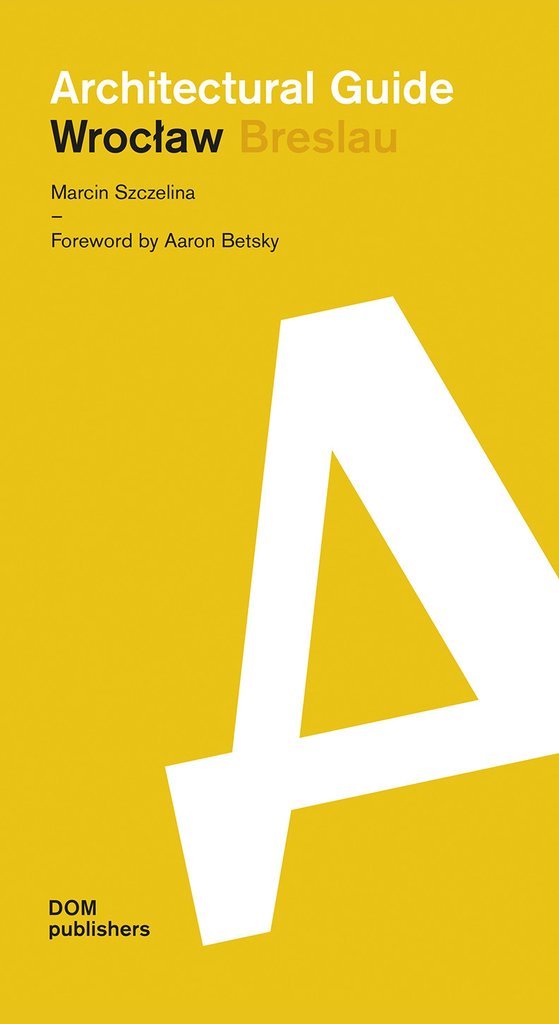Press information
 | Marcin Szczelina Architectural Guide Wrocław / Breslau With a preface by Aaron Betsky and contributions by Ivan Blasi, Kuba Snopek, Kamil Krawczyk, Łukasz Kos, Izabela Cichońska, Karolina Popera and Nicholas W. Moore 134 × 245 mm, 240 pages 350 pictures, softcover ISBN 978-3-86922-426-8 (English) EUR 38.00 April 2017. DOM publishers, Berlin |
Now available from DOM publishers:
Marcin Szczelina
Architectural Guide Wrocław / Breslau
Breslau (Wrocław in Polish) is one of the oldest cities in Poland, with an eventful history and thus many changes to its cityscape. This city on the Oder River has always been reinvented, and today has many architectural monuments: it is in some ways a showcase of architectural development, a blend of Gothic, Baroque, Modern, Soviet, Postmodern and Contemporary architecture.
In the Architectural Guide Wrocław / Breslau, the Polish architectural critic and curator, Marcin Szczelina, presents 150 selected buildings from the Middle Ages to the present. The volume is chronologically divided into four chapters, that follow the city's long history,: from the early Middle Ages to 1850, from the Industrialisation to the end of World War II, the Soviet period after 1945, and finally from 1989 to the present. Like many cities in Poland, Breslau has a medieval city centre, characterised by trade. In the Napoleonic period, elegant parks and spacious squares were built around the old town. During the Industrialisation, in the late nineteenth century, Breslau expanded tenfold. Hundreds of streets and blocks – large urban ensembles – emerged. Much of this formerly progressive, cosmopolitan and multicultural city was destroyed during the last months of World War II, followed by the expulsion of the German population and the settlement of the Polish refugees, which also affected the development of the post-war city. The less destroyed pre-war Breslau is found mainly north of the Oder RIver, while southern Wrocław became an experimentation field for new architecture, as the co-author Kuba Snopek explains vividly in his introduction. Further introductory chapters on incisive themes such as the founding of the city, the legacy of Modernity, or the churches built during the Soviet period round off the picture.
After Danzig and Warsaw, this is now DOM publishers' third Architectural Guide to present a Polish metropolis.
 |  |  | ||
| All images © DOM publishers | ||||
| View all press images |
The Architectural Guides by DOM publishers are handy travel companions for readers interested in architecture and culture. Projects are carefully selected and researched to make each individual book a ready work of reference, while background information and attractive design inspire armchair travellers to imaginary journeys. In 2014, the series was awarded with the “Iconic Award” by the German Design Council, in 2016 with the “German Design Award Special”, and in 2017 with the ITB BookAwards. Further information: www.dom-publishers.com



